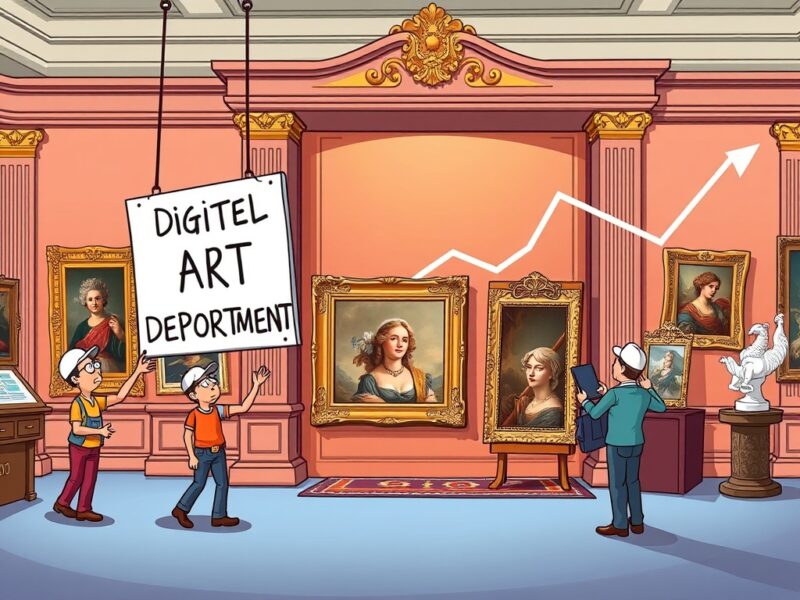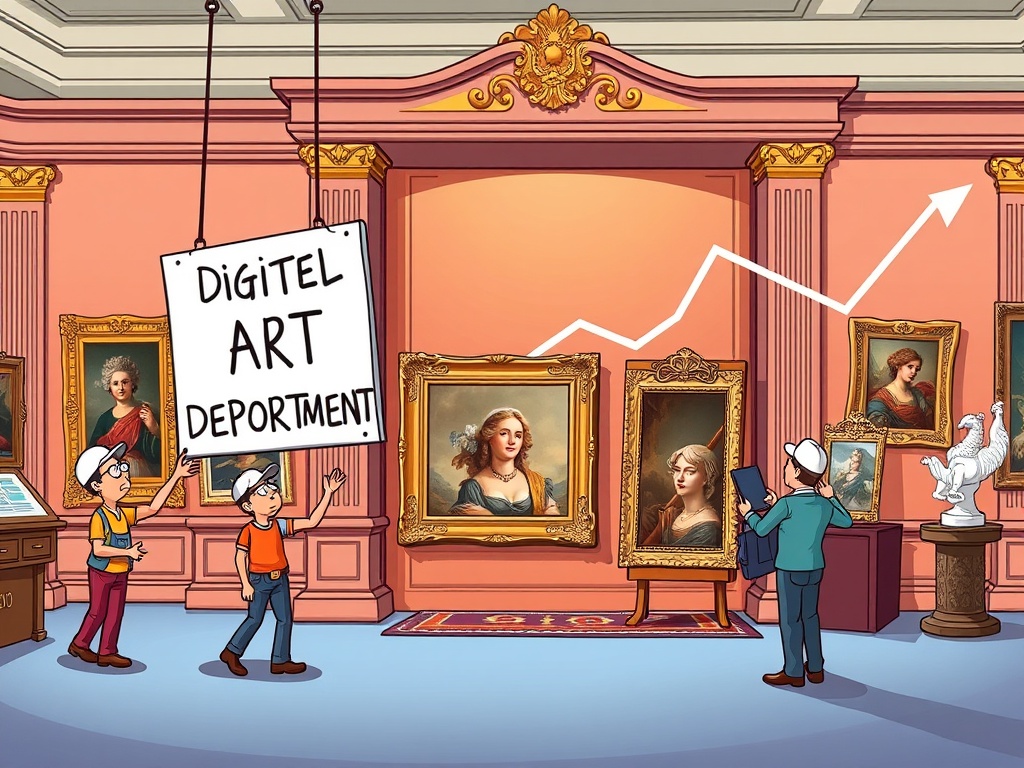Shocking: NFT Market Downturn Leads to Christie’s Digital Art Department Closure
0
0

BitcoinWorld

Shocking: NFT Market Downturn Leads to Christie’s Digital Art Department Closure
The world of art and blockchain has just witnessed a significant shift. Christie’s, the renowned auction house, has made a pivotal decision: closing its dedicated digital art department. This move comes as a direct response to the broader NFT market downturn, signaling a recalibration in how traditional institutions approach digital assets.
What’s Behind Christie’s Decision Amidst the NFT Market Downturn?
According to reports from CryptoBriefing, Christie’s has officially shut down its specialized digital art department. This department was initially established to cater specifically to the burgeoning market of NFTs and other digital artworks. Its closure highlights the challenging conditions currently faced by the sector.
The decision wasn’t made lightly. It reflects a strategic adjustment by the auction giant. Instead of a dedicated unit, digital works will now be integrated into Christie’s existing 20th and 21st Century Art categories. This change indicates a desire to streamline operations and adapt to evolving market demands.
This integration suggests that while the dedicated department is gone, Christie’s is not abandoning digital art entirely. Rather, it is repositioning it within a broader, more established framework. This approach could offer digital art a different kind of legitimacy and audience.
How Has the NFT Market Downturn Impacted the Art World?
The NFT market downturn has been a hot topic in recent months. After a period of explosive growth and record-breaking sales, the enthusiasm for non-fungible tokens has cooled considerably. This decline is evident in reduced trading volumes, lower floor prices for many collections, and a general decrease in speculative interest.
Several factors contribute to this downturn:
- Economic Headwinds: Broader economic uncertainty often leads investors to shy away from speculative assets like NFTs.
- Market Saturation: A flood of new NFT projects may have overwhelmed demand.
- Regulatory Concerns: Unclear regulatory frameworks for digital assets add to investor caution.
- Shift in Focus: Interest might be shifting towards more tangible or utility-driven blockchain applications.
This market correction has undoubtedly affected both established and emerging digital artists. It has also prompted a re-evaluation of long-term strategies for platforms and institutions involved in the digital art space.
What Does This Mean for Digital Artists and Collectors?
For digital artists, Christie’s move presents both challenges and potential opportunities. The absence of a dedicated department might seem like a step back. However, integration into traditional categories could expose their work to a different, perhaps more conservative, collector base.
Collectors, especially those new to digital art, might find it easier to navigate purchases when digital works are presented alongside more familiar art forms. This could potentially bridge the gap between traditional art collectors and the digital realm.
Key takeaways for artists and collectors:
- Focus on Artistic Merit: The emphasis may shift from speculative value to intrinsic artistic quality.
- Diversify Platforms: Artists should explore various avenues for showcasing and selling their work beyond major auction houses.
- Long-Term Vision: The current NFT market downturn encourages a focus on sustainable practices rather than fleeting trends.
Is Christie’s Adapting to a New Reality for Digital Art?
Christie’s decision can be seen as a pragmatic response to a changing landscape. By folding digital art into existing departments, they are acknowledging the evolving nature of the market while maintaining a presence in the space. This strategy allows them to leverage their established expertise in art curation and sales.
This approach also suggests a belief that digital art, despite the current NFT market downturn, has a permanent place within the broader art historical narrative. It’s not a separate phenomenon but rather an extension of contemporary art. Christie’s is effectively normalizing digital art by placing it alongside its 20th and 21st-century counterparts.
The auction house’s long history demonstrates its ability to adapt to new art forms and movements. This latest move is another example of its strategic flexibility in navigating the complexities of the global art market.
Conclusion: Navigating the Evolving Digital Art Landscape
Christie’s closure of its digital art department is a clear indicator of the ongoing challenges within the NFT and broader digital art markets. While the NFT market downturn has undoubtedly played a significant role, this strategic realignment by a major auction house signifies a period of introspection and adaptation for the entire digital art ecosystem. It underscores the need for resilience, innovation, and a clear understanding of market dynamics for all stakeholders involved.
Frequently Asked Questions (FAQs)
1. Why did Christie’s close its digital art department?
Christie’s closed its digital art department primarily due to a significant NFT market downturn and a general cooling of the digital art market, as reported by CryptoBriefing.
2. What is the NFT market downturn?
The NFT market downturn refers to the recent period of decreased trading volumes, lower average prices, and reduced investor interest in non-fungible tokens, following a peak of popularity and high valuations.
3. Where will Christie’s sell digital art now?
Going forward, Christie’s will integrate digital works into its established 20th and 21st Century Art categories, rather than having a standalone department.
4. Does this mean the end of NFTs?
No, the closure of a department by one auction house does not signify the end of NFTs. It suggests a market correction and a strategic adaptation by institutions to evolving conditions. NFTs continue to exist and develop in various forms.
5. How does this impact digital artists?
For digital artists, this might mean a shift in how their work is presented and accessed by collectors. It could lead to a greater emphasis on artistic merit within traditional art categories, encouraging diversification of sales channels beyond dedicated NFT platforms.
To learn more about the latest crypto market trends, explore our article on key developments shaping NFTs market trends.
Did you find this analysis insightful? Share this article with your network to keep them informed about the evolving landscape of digital art and the impact of the NFT market downturn!
This post Shocking: NFT Market Downturn Leads to Christie’s Digital Art Department Closure first appeared on BitcoinWorld and is written by Editorial Team
0
0
 Manage all your crypto, NFT and DeFi from one place
Manage all your crypto, NFT and DeFi from one placeSecurely connect the portfolio you’re using to start.





